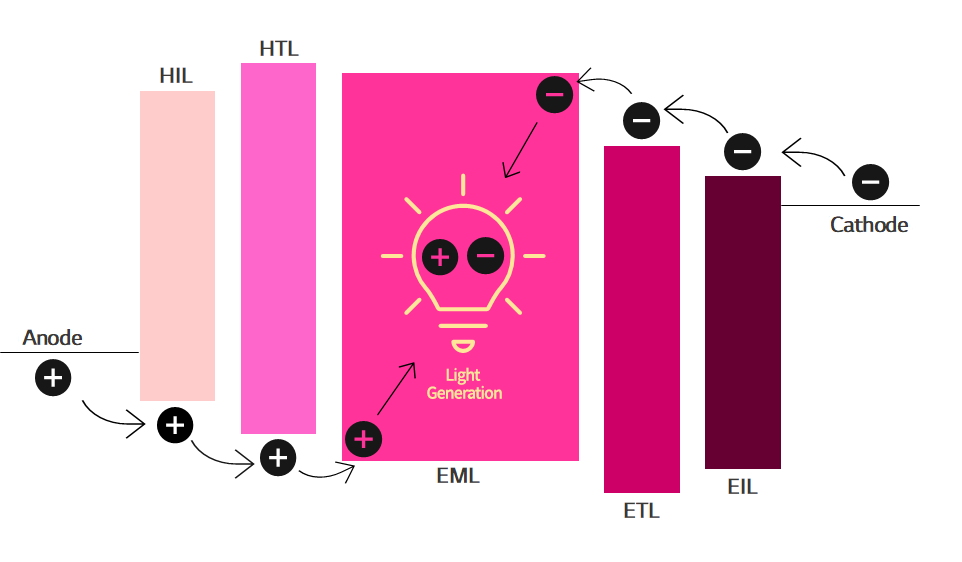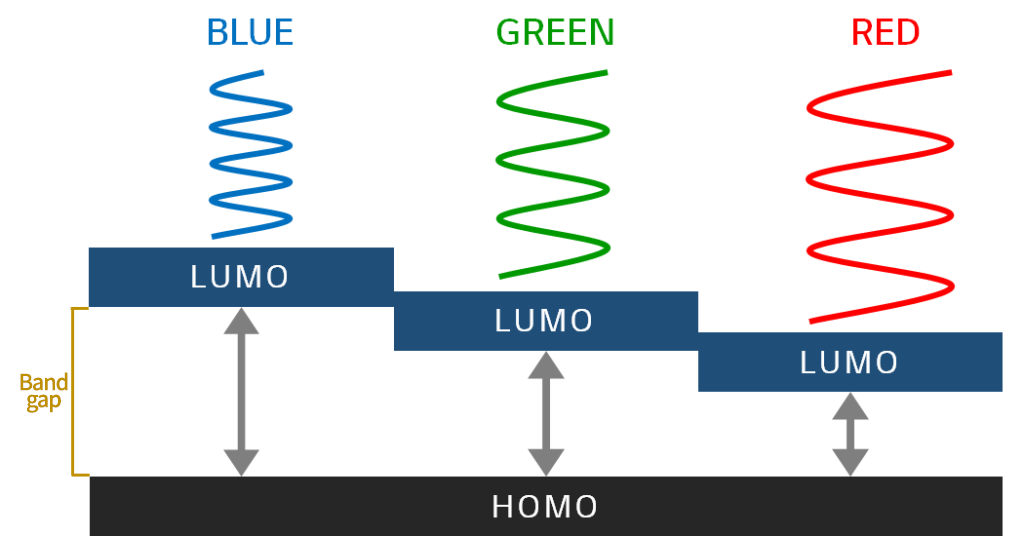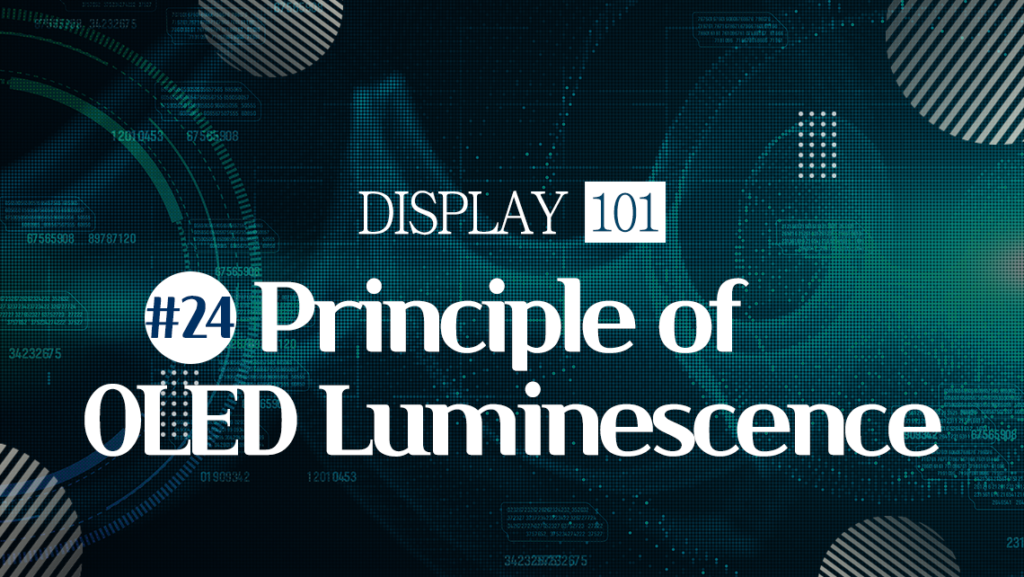DISPLAY 101
#24 Principle of OLED Luminescence

| Organic Light Emitting Diode (OLED): A display made using organic compounds that emit light when current flows through them. |
Each OLED component emits its own light, so there is no need for a “backlight unit” component to produce light that then shines through components or filters. Therefore, OLEDs can be much thinner and lighter while it can also be implemented as various form factors such as foldable and rollable displays. But how exactly do OLED components produce light?
OLED structure being self-emissive

Essentially, the principle of OLED luminescence utilizes the electroluminescent phenomenon where energy generated by the difference between positive (+) and negative (-) charges is emitted in the form of light. When electricity is supplied to the OLED structure, positive charges injected from the anode migrate to the cathode, and electrons injected from the cathode migrate to the anode. The positive charges and electrons recombine in the emission material layer (EML) through organic materials that facilitate their movement, such as hole injection layer (HIL), electron injection layer (EIL), hole transport layer (HTL), and electron transport layer (ETL). The resulting combined entity is called an exciton. Initially, it’s in an excited state with high energy, but it loses the energy and reaches a ground state. The energy lost is emitted in the form of light.
The end result is that the self-emissive property of OLED creates a high-contrast ratio screen where parts of the screen that are supposed to be dark do not emit light at all and are therefore perfectly black, and the parts of the screen that should emit light are even brighter in contrast. This is accomplished without the use of complex components that reduce the purity of light, such as liquid crystals or color filters. For this reason, OLEDs can boast of color expression that is closer to nature.
How does OLED display colors?

While learning about the emission principles of OLED, you may wonder how OLED displays can represent colors. OLED utilizes a property to express all colors in that the degree of the energy emission of light is different according to the “band gap.” The degree of energy emission inside a substance varies depending on the difference between the highest energy level (HOMO) where electrons exist and the lowest energy level (LUMO) where there are no electrons. In other words, when the band gap is large, more energy is required to span it, so higher energy short-wavelength blue light is emitted when an electron jumps that gap. When the band gap is lower, is it possible for lower energy, longer-wavelength red light to be emitted. The light emitted from a band gap of intermediate size is medium-wavelength green light. OLED combines these three primary colors of light – red, green, and blue – in different intensities to express all colors.









